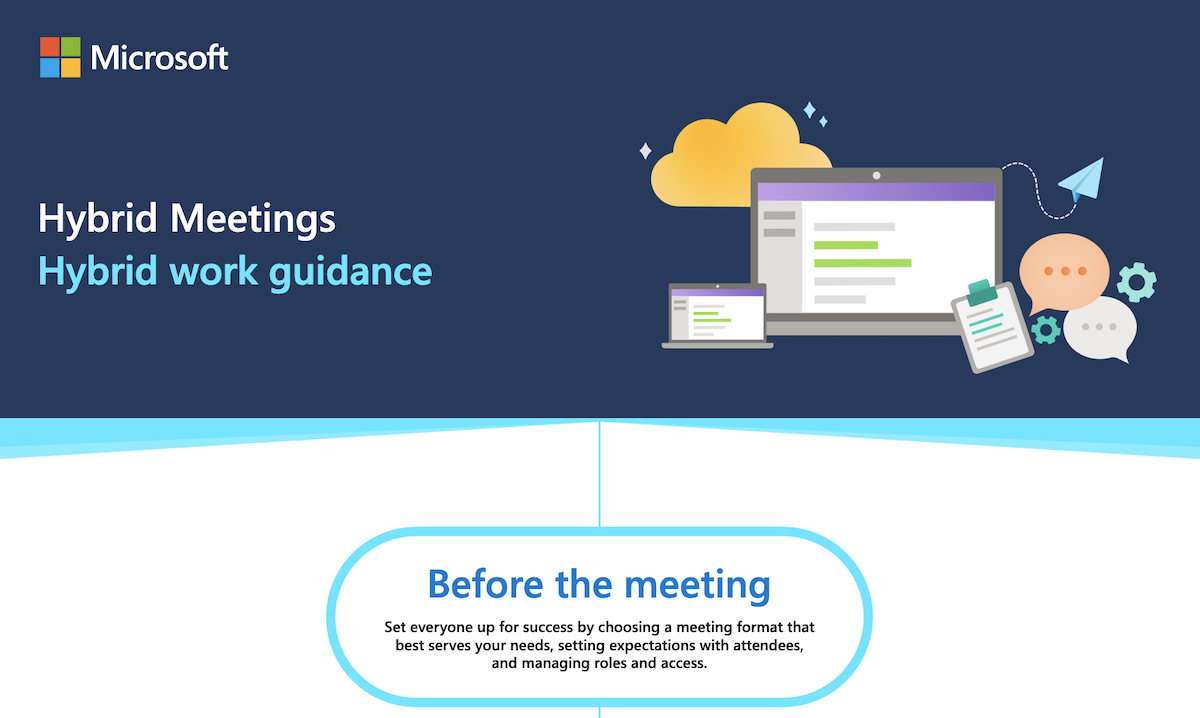Hybrid Meetings: Hybrid work guidance
Hybrid Meetings is a somewhat new concept, which means new guidance exists to make the most of your employees time. Example? Choose a meeting format that best serves everyone’s needs, setting expectations with attendees, and managing roles and access. Create meetings that reflect the culture and use tools that make the experience more engaging. Make sure progress continues after your meeting ends, and that the right people are informed of decisions and outcomes.
A Hybrid Meeting is a meeting that uses both in-person and virtual elements to bring people together. This type of meeting can be very effective, but it’s important to follow a few specific steps to make sure that it goes smoothly. Let’s discuss the three steps for preparing for a Hybrid Meeting, the four steps for conducting a Hybrid Meeting, and the two steps for debriefing a Hybrid Meeting. Following these guidelines will help you create successful Hybrid Meetings that reflect your company’s culture and help you get more done!
Preparing for a Hybrid Meeting:
- -Choose the meeting format that will work best for your attendees.
- -Set expectations with attendees ahead of time.
- -Make sure everyone has the right tools and is prepared to participate in the meeting.
Conducting a Hybrid Meeting:
- -Start on time and stay on track.
- -Keep the meeting moving forward and make sure everyone is engaged.
- -Use tools like video conferencing to keep everyone connected.
- -End on time and follow up with attendees after the meeting.
Debrief The Meeting:
- -Review what went well and what didn’t go well in the meeting.
- -Make decisions and take action items based on what was discussed.
- -Inform the right people of the decisions and outcomes from the meeting.
The meeting process can seem daunting, but following these steps will help you create successful meetings that reflect your company’s culture and help you get more done!
Start on time and stay on track. Keep the meeting moving forward and make sure everyone is engaged. Use tools like video conferencing to keep everyone connected. End on time and follow up with attendees after the meeting.
Review what went well and what didn’t go well in the meeting. Make decisions and take action items based on what was discussed. Inform the right people of the decisions and outcomes from the meeting.






